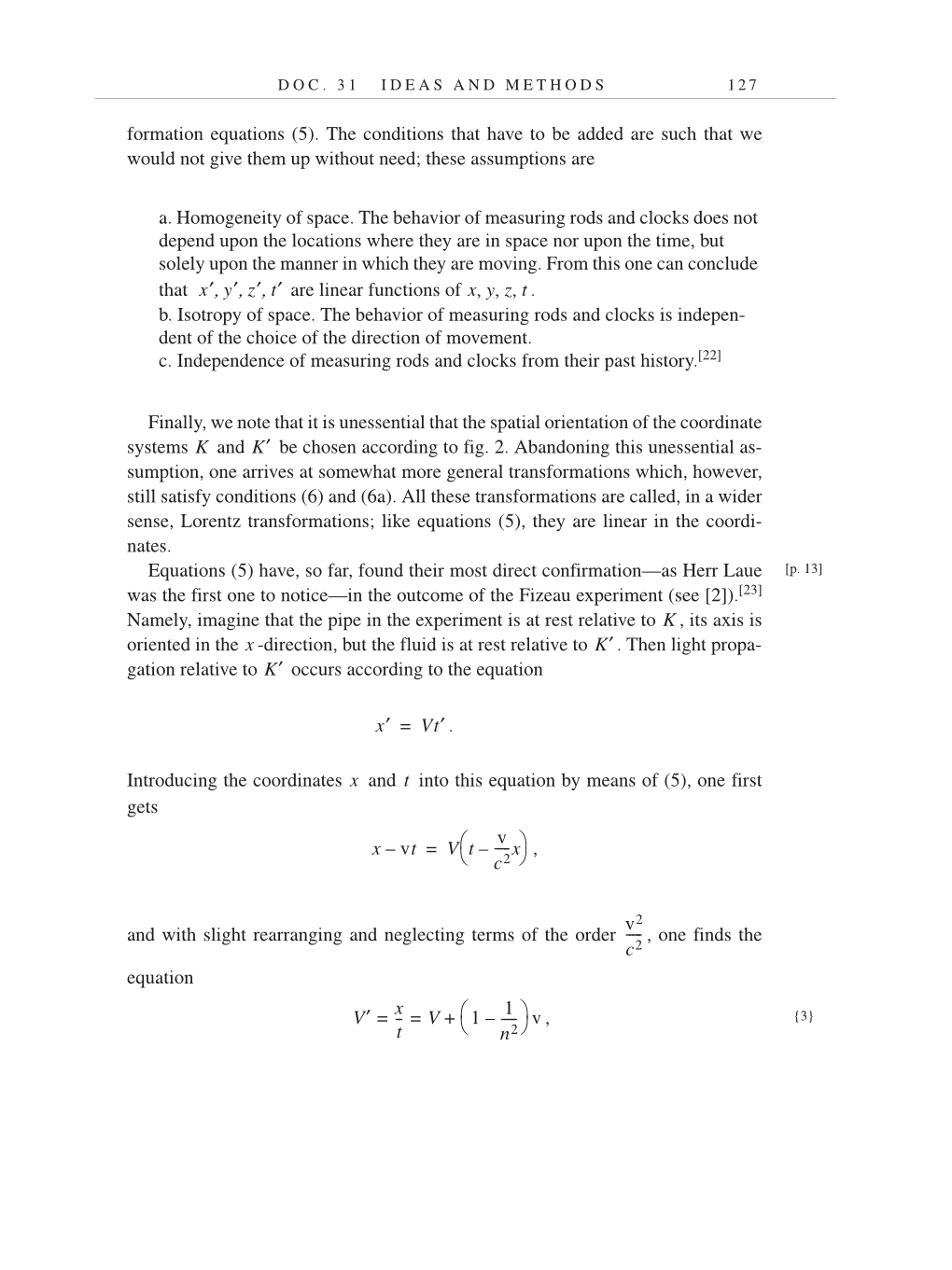D O C . 3 1 I D E A S A N D M E T H O D S 1 2 7
formation equations (5). The conditions that have to be added are such that we
would not give them up without need; these assumptions are
a. Homogeneity of space. The behavior of measuring rods and clocks does not
depend upon the locations where they are in space nor upon the time, but
solely upon the manner in which they are moving. From this one can conclude
that are linear functions of .
b. Isotropy of space. The behavior of measuring rods and clocks is indepen-
dent of the choice of the direction of movement.
c. Independence of measuring rods and clocks from their past
history.[22]
Finally, we note that it is unessential that the spatial orientation of the coordinate
systems and be chosen according to fig. 2. Abandoning this unessential as-
sumption, one arrives at somewhat more general transformations which, however,
still satisfy conditions (6) and (6a). All these transformations are called, in a wider
sense, Lorentz transformations; like equations (5), they are linear in the coordi-
nates.
Equations (5) have, so far, found their most direct confirmation—as Herr Laue
was the first one to notice—in the outcome of the Fizeau experiment (see
[2]).[23]
Namely, imagine that the pipe in the experiment is at rest relative to , its axis is
oriented in the -direction, but the fluid is at rest relative to . Then light propa-
gation relative to occurs according to the equation
.
Introducing the coordinates and into this equation by means of (5), one first
gets
,
and with slight rearranging and neglecting terms of the order , one finds the
equation
,
x′, y′, z′, t′ x y z t , , ,
K K′
[p. 13]
K
x K′
K′
x′ Vt′ =
x t
x vt – V t
v-x⎠
c2
----
–
⎝
⎛ ⎞
=
v2-
c2
----
{3}
V′
x
t
-- V 1
1
n2
---- - –
⎝ ⎠
⎛ ⎞
+ = = v
